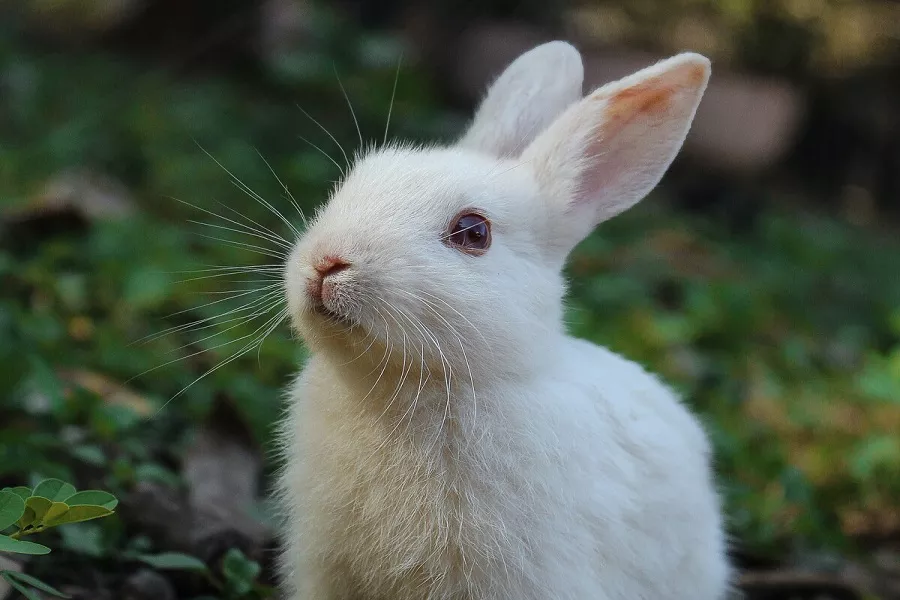What is a blue throated macaw?
The blue-throated macaw (scientific name: Ara glaucoularis): is a large climbing bird in the class Avian and Parrotidae. The body length is about 85 cm and the weight is 600-800 grams. The face has no feathers and is covered with stripes, a bit like a face mask in Peking Opera, with a very long tail. The wings and tail are bright blue-green, the throat is blue, and the upper chest and belly are bright yellow. It has a large beak and a yellow iris. Young birds have a brown iris with a covert turquoise and a yellowish rim at the lower end. At first glance, the blue-throated macaw is similar to the yellow-blue macaw, the blue feathers are more indigo green, and the body size is smaller, but the number is much smaller.
This species inhabits palm groves, grasslands, forests, and moist rainforest lowlands. Most commonly found in pairs, but generally in small groups of 7-9 individuals, and 70 large habitat groups are known. Blue-throated macaws, thought to be composed of non-breeding birds, are endangered in the wild. The main reasons for their disappearance are illegal poaching for the local and international bird trade, as well as pasture development that cuts down the trees that blue-throated macaws inhabit. The zoo is conducting numerous captive breeding and conservation programs to save the species. Bolivia banned the export of this species in 1984, but illegal exports persist.
What does a blue throated macaw look like?
The blue-throated macaw is a large blue-yellow macaw with a body length of 85 cm, a wingspan of 90-100 cm and a weight of 600-800 grams. The crown is slightly dull, the upper body is royal blue, and the buttocks are brighter. The underparts are mostly bright yellow, but the rump is pale blue. The bare face is featherless and covered with blue stripes, a bit like the face mask in Peking Opera, and merges into the blue lower cheeks and throat, separated from the crown by narrow yellow stripes. Pink skin is exposed around the base of the bird’s beak. Large mouth, long tail, with yellow iris. Both genders are similar.
Newly hatched blue-throated macaws are completely pink and have no feathers. Grey down grows with age and is later replaced by coloured, mature feathers. The iris also changes color with age. The chick’s eye color is initially black and turns brown shortly after opening. When 1-3, its eyes will turn grey and then white. As the macaw matures, the iris will turn yellow, become more golden after 10 years, and become richer with age. Older macaws show a dark gray ring around the pupil, thinning of the iris, and revealing the back of the retina. A continuum of iris colors can be used to estimate the age of a macaw.
blue throated macaw habits
Blue-throated macaws are social birds, mostly in pairs or small groups. Large groups of more than 70 individuals are occasionally seen, but large groups of this species are infrequent, most likely because the species is so rare and small in number that such large groups are unlikely. Mating blue-throated macaws are very affectionate with each other and are often seen grooming each other and roosting close together. Blue-throated macaws and blue-and-yellow macaws can sometimes be seen interacting. Nests in dead palm tree cavities. Compared to other large macaws, blue-throated macaws are quieter and do not screech at will.
Lives, forages and nests in trees. The primary mode of locomotion is flight, but they can also climb trees, move along branches and walk on the ground. These parrots are active during the day and usually stay in a large area. There have been sightings of blue-throated macaws in Paraguay, suggesting that the macaws sometimes travel long distances.
Often foraging in clusters with blue-and-yellow macaws, blue-throated macaws eat seeds and nuts to a lesser extent than other macaws, and they mainly eat the fruits of large palm trees, Coyol palm (Acrocomia aculeata) and Mauritia fleuxosa The fruit is the main source. Also eats the mesocarp of ripe and near-ripe fruits, and has also been observed to peck on the fluids of very immature fruits.
blue throated macaw rearing
Domestic blue-throated macaws are not like wild parrots that run away when they see people. When your parrots are familiar with you, they will be very lively, play with you, and will not avoid you. Let’s take a look at the common sense about raising blue-throated macaws.
In terms of diet, provide them with a variety of foods, including fruits and vegetables, grains, seeds, stone fruits, etc. The wild breeding period is about from August to October; the artificially reared blue-throated diamonds can quickly adapt to the new owners, and the breeding period They can be kept together with other large macaws, love bathing, and have strong gnawing power. They are the first-class conservation parrots in Appendix I of the Washington Convention, and they are very precious and rare parrots.
Reminder: For more knowledge about angora rabbit, lemur, bearded reedling, golden hamster, red eyed tree frog, please pay attention to: mtedr.com, providing you with different types of small pets and pet care.


























